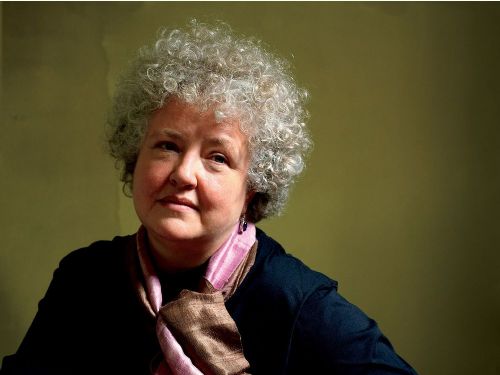|
Symphony
MONUMENTAL MAHLER 5TH IN SO CO PHIL'S SEASON ENDING CONCERT
by Terry McNeill
Sunday, April 14, 2024
Chamber
OAKMONT SEASON CLOSES WITH STRAUSS' PASSIONATE SONATA
by Terry McNeill
Thursday, April 11, 2024
Chamber
MORE GOLD THAN KORN AT ALEXANDER SQ CONCERT
by Terry McNeill
Sunday, April 7, 2024
Choral and Vocal
VIBRANT GOOD FRIDAY REQUIEM AT CHURCH OF THE ROSES
by Pamela Hicks Gailey
Friday, March 29, 2024
TWO OLD, TWO NEW AT THE SR SYMPHONY'S MARCH CONCERT IN WEILL
by Peter Lert
Saturday, March 23, 2024
Chamber
NOT A SEVENTH BUT A FIRST AT SPRING LAKE VILLAGE CONCERT
by Terry McNeill
Wednesday, March 20, 2024
THIRTY-THREE PLUS VARIATIONS AND AN OCEAN VIEW
by Terry McNeill
Saturday, March 16, 2024
Choral and Vocal
A ST. JOHN PASSION FOR THE AGES
by Abby Wasserman
Friday, March 8, 2024
Choral and Vocal
SPLENDID SCHUBERT SONGS IN SANET ALLEN RECITAL
by Terry McNeill
Saturday, March 2, 2024
Chamber
SHAW'S MICROFICTIONS HIGHLIGHTS MIRO QUARTET'S SEBASTOPOL CONCERT
by Peter Lert
Friday, March 1, 2024
|
 |
 Violinist Monica Huggett |
PRAGUE AND VIENNA PALACE GEMS HIGHLIGHT VOM FESTIVAL CONCERT
by Sonia Morse Tubridy
Saturday, July 28, 2018
The remarkable Valley of the Moon Chamber Music Festival presented a concert called “Kinsky Palace” July 28 on their final Festival weekend in Sonoma’s Hanna Center. Two well-known treasures and one lesser gem were programmed.
Starting the afternoon offerings were violinist Monica Huggett and Festival apprentice fortepianist Christian De Luca performing Beethoven’s Violin Sonata Op. 24 (“Spring”). This Sonata, as Ms. Huggett told the audience in humorous and lively introductory remarks, has exemplary violin writing, and she gave a nuanced and spirited performance with liquid scales and lyrical tone in profusion. Violin and fortepiano traded themes, intertwined, contrasting and reinforcing each other. The two parts were always clear and balanced in the opening allegro. The second movement was played with heartfelt tenderness and the forward-moving tempo supported masterful melody shaping. Then the intensely rhythmical and cleverly syncopated scherzo was delightfully played. The final rondo was played with careful matching of articulation and beautiful phrase shaping. The main theme appeared in different guises and myriad delightful forms. The audience gave this performance a standing ovation and bravos.
Hummel’s Clarinet Quartet in E-Flat Major (S. 78) followed. Erich Hoeprich, on an historic replica clarinet he crafted, joined 2018 Laureates Rachel Wong, violin, violist Andrew Gonzalez and Festival co-founder Tanya Tomkins on the cello. Hummel was a Mozart and Haydn protégé and in this Quartet of about 28 minutes he integrates the clarinet into the chamber group rather than contrasting the wind sound against the strings, a remarkable achievement of the composer and of these performers.
The first movement (allegro moderato has a charming opening, the themes being traded with classical clarity reminiscent of Mozart. The music is vibrant and bubbly, and has some mystery and changeable moods of passion and drama. All the while the instrumental voices interacted and created a unified sound rather than flights of individualism. The second movement was in tarantella style, played with precision and outstanding wild passages, especially from the cello. The andante third movement featured playing of lovely legato phrases. The mood was pleasant and the interpretation was beautifully understated. The rondo was full of musical gestures of the Classical Period. Particularly effective were passages pairing the violin and viola and the continual blending of clarinet and strings. This Hummel Quartet from 1807 certainly could inspire listeners to become acquainted with more of his compositions. Once again there was a standing ovation.
After the intermission Beethoven’s unique piano/woodwind quintet, Opus 16, was performed by Marc Schachman, oboe; Mr. Hoeprich, hornist Sadie Glass; Kate van Orden, bassoon; and Festival pianist Eric Zivian. This piece was inspired by Mozart’s quintet for the same ensemble and in fact, Mozart seemed to be an unseen inspiring presence throughout the afternoon. Beethoven’s opening (grave) was rhythmical and crisp, the piano exhibiting its power without competing with or overpowering the wind ensemble. This led into an allegro of relaxed spontaneity and large gestures, occasionally evoking dreamy worlds. Modern instruments can make this writing sound like a piano concerto, but here it was a fresh collaborative sound. An extramusical moment of drama was the breaking of a fortepiano string, but Mr. Zvian assured the audience that the music could be carried on with the note’s remaining string.
The andante movement is certainly one of the most beautiful pieces in chamber music repertoire. The fortepiano opening theme was very expressive and led to the wind instruments reiteration with their full and forceful tone. Thereafter each instrument was featured in a solo: Mr. Schachman’s rich oboe tone, Ms. van Orden’s mellow bassoon, the distinctive colors of horn and clarinet all singing out, then all rising on a chromatic tide together to bring back the fortepiano with new elegant ornamentation. The third movement is a rondo romp with typical hunting horn harmonies, tossing of ideas back and forth, with phrases calling for play, dance, and to rejoice. The tempo was well chosen and the music was performed straightforward, direct and full of optimism.
A reception with wine and happy company concluded the afternoon of a musical visit to the world of palaces in Vienna and Prague of the 18th century. Bravos to Valley of the Moon Festival musicians! “Aufwiedersehen” next summer.
|

